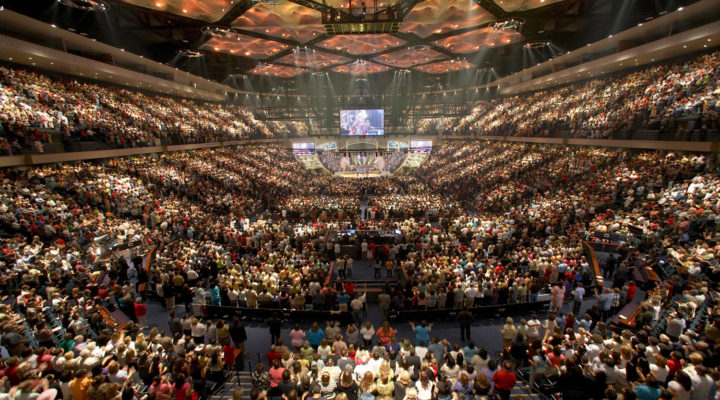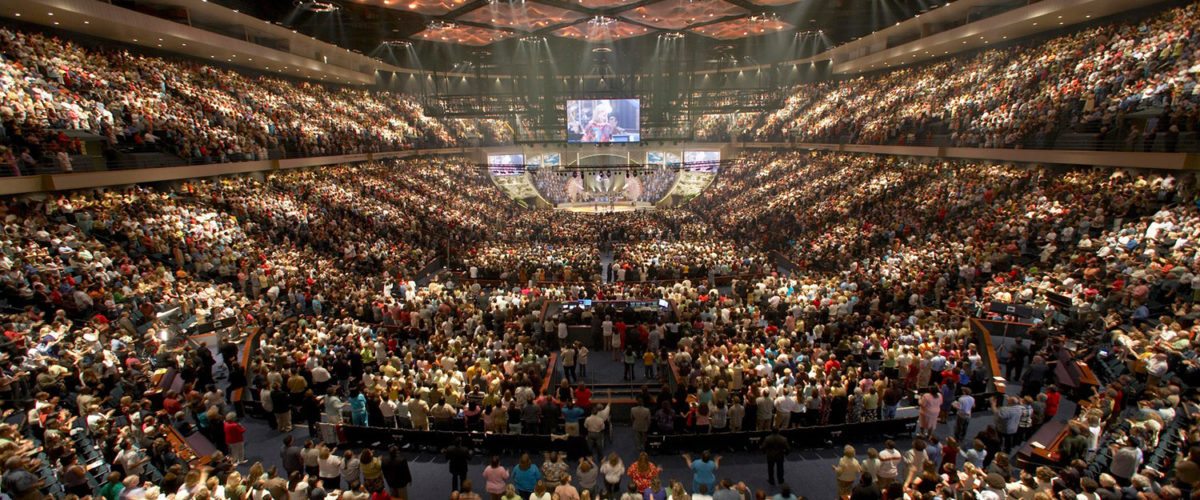One of the best resolutions small churches can make in 2017 is to stop comparing themselves to megachurches.
But they might be tempted to make those comparisons after a study discovered that large congregations enjoy a steady influx of unchurched seekers and a strong — 55 percent — volunteer rate among members.
“The number of very large churches continues to increase,” the Leadership Network reported in an article titled “9 Fascinating Facts About People Who Attend Megachurches.”
“And within that group,” the article continued, “the biggest churches continue to get bigger.”
Author Warren Bird said he and fellow researcher Scott Thumma surveyed 25,000 “really big churches” and learned there was no slowdown in the growth of American megachurches.
They also found that close to two-thirds of attendees of very large churches have been at these congregations less than five years.
The researchers also learned that while many come from other churches, almost a quarter haven’t been to church in a long time before first visiting their megachurch.
Most of them were attracted by worship style, the lead pastor and the church’s reputation, Bird writes.

One of the few megachurch traits that small churches should try to emulate is in being clearly aware of their strengths and weaknesses, one expert said. (Photo/Wikimedia Commons)
Those three factors, plus the arts, social and community outreach plus adult-oriented offerings contributed to long-term attendance, Bird and Thumma found.
Attendees also reported their spiritual needs were being met as they increased their involvement at church.
Those surveyed also praised their large churches for enabling them to “craft unique, customized spiritual experiences through the multitude of ministry choices and diverse avenues for involvement,” Bird reported.
‘Maximizing their strengths’
Those are just the kind of trends that can get small- and medium-church ministers salivating. But they really shouldn’t be envious at all, said Paul Tidsworth, a congregational and church leadership consultant and president of Pinnacle Leadership Associates, based in South Carolina.
“I would suggest smaller churches not imitate what they [large churches] are doing,” he said.
“It’s a very distinct model, but if you’re not a huge church, you can’t do that model,” he said. “It takes specialized gifts, talents and resources.”
But there are characteristics small churches share with their larger counterparts, Tidsworth said.
One of the facts common to the very large churches is that most new people attend because a family member, friend or coworker invited them, the study found.
The same is often true in smaller congregations, so they should not be shy about inviting seekers, Tidsworth said.
But if smaller churches want to compare themselves to megachurches, it should be in the way the larger congregations continually assess their skills and the needs and desires of potential and current members, Tidsworth said.
“Megachurches are very clear about who they are are and they are continually maximizing the strengths of their model,” he said.
Smaller congregations can do that, too. And they should, he added, because many Christians and seekers are not interested in attending huge churches.
“There are plenty of people who are never going to walk through the door of a megachurch,” he said.



